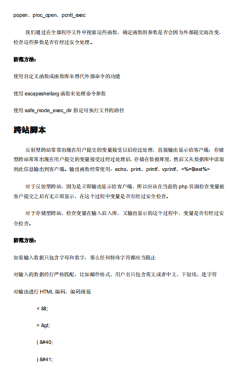
PHP与Redis深度整合:缓存策略与性能优化
作为一名在Web开发领域深耕多年的开发者,我见证了无数项目从简单的文件缓存到复杂的分布式缓存架构的演进。今天我想和大家分享的是PHP与Redis的深度整合经验,这些实战技巧曾帮助我将系统性能提升了数倍,也让我踩过不少坑。
环境准备与Redis扩展安装
在开始之前,我们需要确保环境准备就绪。我推荐使用PECL安装Redis扩展,这是最稳定可靠的方式。
# 安装Redis扩展
pecl install redis
# 在php.ini中添加扩展
echo "extension=redis.so" >> /path/to/php.ini
# 重启PHP-FPM
service php-fpm restart
验证安装是否成功:
Redis连接配置与连接池优化
在实际项目中,我发现连接管理是影响性能的关键因素。下面是我常用的连接配置:
redis = new Redis();
// 连接超时2秒,读写超时5秒
$this->redis->connect('127.0.0.1', 6379, 2);
$this->redis->setOption(Redis::OPT_READ_TIMEOUT, 5);
// 启用序列化压缩
$this->redis->setOption(Redis::OPT_SERIALIZER, Redis::SERIALIZER_PHP);
}
public static function getInstance() {
if (self::$instance === null) {
self::$instance = new self();
}
return self::$instance->redis;
}
}
?>
基础缓存策略实现
缓存策略的选择直接影响系统性能。我通常根据数据特性选择不同的策略:
redis = RedisManager::getInstance();
}
// 缓存穿透防护 - 空值缓存
public function getWithNullProtection($key, $callback, $ttl = 3600) {
$value = $this->redis->get($key);
if ($value === false) {
$value = $callback();
// 即使为空也缓存,防止缓存穿透
$this->redis->setex($key, $ttl, $value === null ? 'NULL' : $value);
}
return $value === 'NULL' ? null : $value;
}
// 缓存击穿防护 - 互斥锁
public function getWithMutex($key, $callback, $ttl = 3600, $lockTimeout = 10) {
$value = $this->redis->get($key);
if ($value === false) {
$lockKey = $key . ':lock';
// 获取分布式锁
if ($this->redis->setnx($lockKey, 1)) {
$this->redis->expire($lockKey, $lockTimeout);
try {
$value = $callback();
$this->redis->setex($key, $ttl, $value);
} finally {
$this->redis->del($lockKey);
}
} else {
// 等待其他进程构建缓存
usleep(100000); // 等待100ms
return $this->getWithMutex($key, $callback, $ttl, $lockTimeout);
}
}
return $value;
}
}
?>
高级缓存模式:读写分离与数据分片
当系统规模扩大时,单一Redis实例可能成为瓶颈。这时就需要考虑更高级的架构:
writeClient = new Redis();
$this->writeClient->connect($config['write']['host'], $config['write']['port']);
// 读客户端集群
foreach ($config['read'] as $readConfig) {
$client = new Redis();
$client->connect($readConfig['host'], $readConfig['port']);
$this->readClients[] = $client;
}
}
// 一致性哈希分片
private function getShardClient($key) {
$hash = crc32($key);
$index = $hash % count($this->readClients);
return $this->readClients[$index];
}
public function set($key, $value, $ttl = 3600) {
$this->writeClient->setex($key, $ttl, $value);
}
public function get($key) {
$client = $this->getShardClient($key);
return $client->get($key);
}
}
?>
性能监控与调优技巧
性能优化离不开监控。我习惯在代码中嵌入性能统计:
0,
'misses' => 0,
'response_time' => []
];
public static function record($key, $hit, $responseTime) {
self::$stats[$hit ? 'hits' : 'misses']++;
self::$stats['response_time'][] = $responseTime;
// 定期清理历史数据
if (count(self::$stats['response_time']) > 1000) {
array_shift(self::$stats['response_time']);
}
}
public static function getHitRate() {
$total = self::$stats['hits'] + self::$stats['misses'];
return $total > 0 ? (self::$stats['hits'] / $total) * 100 : 0;
}
public static function getAverageResponseTime() {
$times = self::$stats['response_time'];
return count($times) > 0 ? array_sum($times) / count($times) : 0;
}
}
?>
实战经验与踩坑记录
在多年的实践中,我总结了一些重要的经验教训:
内存管理: Redis是基于内存的,必须设置合理的maxmemory策略。我推荐使用allkeys-lru,它会自动淘汰最近最少使用的键。
持久化配置: 根据业务需求选择RDB或AOF。对于可丢失的数据,使用RDB;对于关键数据,使用AOF。我曾经因为配置不当导致数据丢失,教训深刻。
网络优化: 避免在循环中频繁操作Redis,使用pipeline批量操作可以显著提升性能:
pipeline();
for ($i = 0; $i < 1000; $i++) {
$redis->set("key:$i", "value:$i");
}
$redis->exec();
?>
键名设计: 使用有意义的命名空间,比如”user:123:profile”,避免键冲突,也便于维护。
总结
PHP与Redis的整合不仅仅是技术实现,更是一种架构思维。从简单的键值存储到复杂的缓存策略,每一步都需要根据业务场景精心设计。通过合理的缓存策略、连接管理和性能监控,我们能够构建出既快速又稳定的系统。
记住,缓存不是银弹,它解决了性能问题,但也带来了数据一致性的挑战。在实际项目中,我们需要在性能和数据准确性之间找到平衡点。希望我的这些经验能够帮助你在PHP与Redis的整合之路上少走弯路!
2. 分享目的仅供大家学习和交流,您必须在下载后24小时内删除!
3. 不得使用于非法商业用途,不得违反国家法律。否则后果自负!
4. 本站提供的源码、模板、插件等等其他资源,都不包含技术服务请大家谅解!
5. 如有链接无法下载、失效或广告,请联系管理员处理!
6. 本站资源售价只是赞助,收取费用仅维持本站的日常运营所需!
源码库 » PHP与Redis深度整合:缓存策略与性能优化





